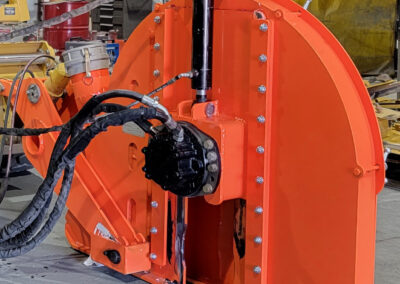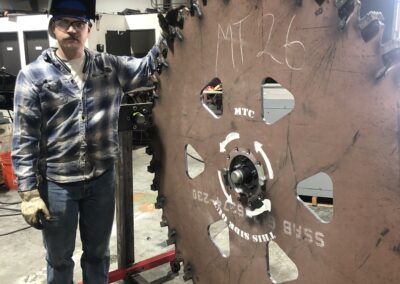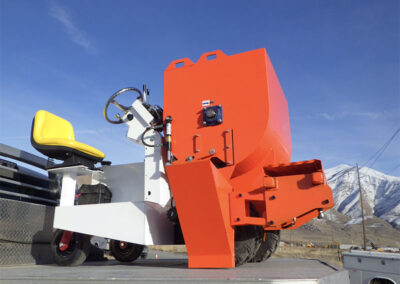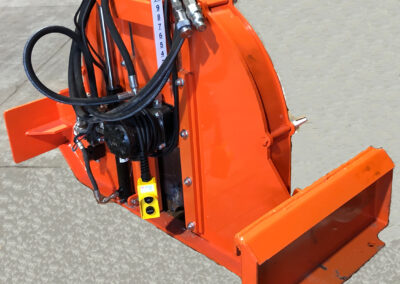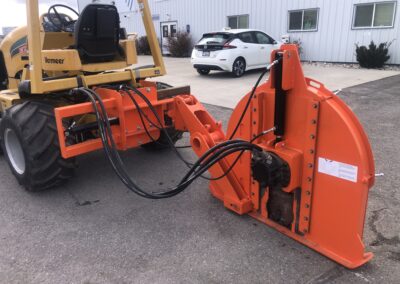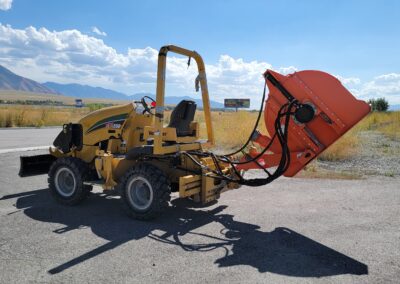Please reach us at info@go-mtc.com if you cannot find an answer to your question.
What is the type of steel used?
Imported Swedish Hardox AR (Abrasion Resistant) Plate is used for all components. This is a very hard and abrasion resistant steel. Commonly seen to add wear plates to excavator and bulldozer blades. We don’t know of a better – longer lasting – steel. And it is twice the strength of the steel used by our competitors. We know, we actually measured their hardness.
How do you cut the steel?
We use either a laser or a waterjet cutter that applies a 60,000 PSI stream of water mixed with garnet powder to cut the plate. The cutter is CNC controlled to produce a fine, accurate cut with zero heat affected zones. Very smooth cut. Not using flame or plasma keeps the steel at maximum hardness. Some of our competitors actually post videos of them flame cutting their blades.
How do you attach the PDC and Carbide Parts?
We use an electronic RF induction heater which uses high power radio frequency magnetic fields to cause just the tooth to rapidly heat up to a very precise temperature. This allows us to preserve the hardness of the steel and provides excellent repeatability in the brazing process. Others use torch brazing techniques which can soften the steel.
Can the blade be rebuilt?
Yes, as long as the erosion has not continued into the shoulder area (See our design page) the teeth can be replaced repeatedly. It is not uncommon to see a blade last 50,000′ to 75,000′ with regular teeth maintenance. A (1″) tooth costs $125 to replace in our shop. Or $75 each for field replacements (1″, 1.5″ are $100). As long as the operator keeps an eye on any tooth missing the PDC cutters and stops using it prior to shoulder damage, we can fix it. Over and over. Refreshing the hardfacing on the sides is key as well. Look at the videos on the gallery page for tips to make the blades last longer.
Can we replace teeth ourselves?
Yes, it is simple quick and easy. You will need an oxy/acetylene cutting torch or plasma cutter to remove the old tooth. Bevel out the tooth socket and weld the new tooth in. Nothing special about the process at all. New teeth (1″) are available for $75.
What causes PDC insert damage?
Hitting a buried manhole ring, concrete layers under asphalt, large stones – all will chip and damage the PDC inserts. Cutting against the curb also chips the sides and can heat them up so much that the brazing will melt. Some of this is controllable some of it is just the luck of the draw. If the cutting is a nice 4″ layer of good asphalt over good road base, these things will cut for a very long time. But get in to some large cobble and the damage starts happening.
What makes a blade last a long time?
First the hardness of the steel is one of the primary factors affecting blade life. We are the hardest blades in the industry as far as we know. The PDC and carbide inserts protect the tooth. As long as the PDC and carbide inserts are not missing or chipped too much the blade will just keep on cutting. So the short answer is that it depends on what you are cutting. We have several videos in the gallery that gives tips on ensuring long blade life. Frequent inspections and replacement of worn down hardfacing is key. Our hardfacing has tungsten carbide grit embedded in the molten metal. That is a very important part of our design.
How long do they last?
We really don’t know the upper limit. Some of them have gone beyond 60,000′ and are still cutting like new. If you keep an eye on the PDC inserts and replace the tooth before shoulder erosion there is virtually no upper limit on the amount of cutting you can do. You also have to keep an eye on the hardfacing on the sides. Most blades may need a bit of attention in the 15000′ range. It all depends on what you are cutting. Asphalt over concrete or cutting against the curb may require tooth replacement in as little as 1000′ to 2500′ But that is true irrespective of who manufactured the blade.

